Dealing with knee pain while running is no fun and NOT required to be a runner! If this has been your experience, let’s talk about some of the best running shoes for knee pain. And of course, because I’m a running coach a few things that could help alleviate that pain from your runs!
Knee pain can happen to anyone, runner or not. We all know the favorite question from non-runners is, “Don’t your knees hurt?” Or they like to say they could never run because their knees ALREADY hurt.
But the reality is, running itself is not inherently bad for our knees. Usually it’s our poor choices. Doing too much too quickly, wearing the wrong shoes, and weak muscles from refusing to strength train are some of the most common reasons runners may experience knee pain.
In most cases, knee pain doesn’t mean you have bad knees and it’s not permanent. It’s important to find the cause and then a solution to get you back on the road and trails quickly.
However, while you are building up your mileage or dealing with any pain, why wouldn’t we take advantage of gear to make things feel better?!
I’ve compiled a list of some of the best running shoes out there to help those dealing with knee problems. Stick with me as we look at some of the causes of knee pain, how much cushion may be too much, how to pick the right shoes, and my recommendations for shoes you might want to check out.
Why Do Your Knees Hurt While Running?
I’ve done a huge article on 7 causes of knee pain while running to help you see exactly what might be happening and resolve it. But for a quick overview:
- Weak hips and glutes. They may not be able to help you maintain proper alignment.
- Overstriding. You may be reaching when you run with your feet landing in front of your body.
- Overpronation. Your feet are rolling inward.
- Supination. Your feet are rolling outward.
- Wrong running shoe fit. Yes, you may be in the wrong shoes for your body and feet
- Worn out shoes. Wearing shoes that have seen too many miles means the shoe is broken down and breaks down your form.
It’s important that you determine the cause of your knee pain before going any further.
Shoes aren’t cheap and while you can often return them if they aren’t the right shoe for you, you don’t want to have to do that numerous times because changing shoes is simply masking the problem and not solving it.
If your knee pain stems from weak hips and glutes, changing shoes isn’t going to help. You’ll first need to strengthen those muscles to help you maintain proper alignment when running. I’ve done several posts about strengthening these muscles and they’re great rehab and prehab exercises for all runners.
If you are overstriding, it’s time to take a look at your form overall. Again, you’re in luck because I have a post highlighting 4 ways you can improve your running form that touches on overstriding.
When it comes to pronation, be it overpronation and supination, sometimes this is a biomechanical issue and sometimes it’s being in the wrong shoes.
Regardless, they can cause pain in knee joints and other issues with the lower legs, including ankle, foot, and hip pain, shin splints, IT Band Syndrome, and the dreaded plantar fasciitis. And you can always try a knee brace for running to provide some additional support.
How to Find the Right Shoes for Knee Pain
Once you’ve determined the cause of your knee pain and a solution, it’s time to find appropriate shoes. You want to consider a number of factors, including your feet and arches, comfort, support, cushion, materials used, and sizing options.
How Much Cushion is Too Much?
You might think the more cushion the better. After all, runners’ knees, feet, and other joints have to absorb a lot when we run. And there are lots of shoes with plenty of cushioning on the market! But max cushion isn’t always a good option.
Some studies have shown that too much padding does not lessen injury risk and may lead to more injuries instead of fewer.
For example, a 2018 study found that maximalist shoes can “alter spring-like running mechanics and amplify rather than attenuate impact loading.” The increased impact loading was attributed to a stiffer leg during each landing. This was compared to a standard running shoe.
That doesn’t mean extra cushion is a bad thing for everyone. Because another more recent study say maximal shoes were great for distributing load and comfort.
We’re all individuals so you have to find the right shoe for you!
9 Best Running Shoes for Knee Pain
Below are our top picks for the best running shoes when dealing with knee pain. Remember, there are a lot of factors to consider so keep those in mind when picking a shoe. Maybe your next pair will be one of the ones reviewed below.
Best for Max Cushion – Hoka One One Bondi 8
The Hoka One One Bondi is great for everyday running and walking. With its max cushioning, it’s almost guaranteed to provide max comfort too. The one thing to remember is that the more cushion, the less “pop” or speed you’ll get from a shoe.
I think this is really ideal for our heavier runners, those who are doing 5+ hour marathons and want some soft lasting cushion.
The newest model has a mesh construction, lighter foams, and an extended heel that offers a soft but balanced roll-through from heel strike to push-off. Just remember as we mentioned before that more cushion isn’t always better.
So this for me is one of the shoes in my rotation for recovery runs, but not for everyday.
- Neutral
- 4mm heel drop
- Maximum cushion
- 8.9 oz (womens)
- $165
Best for Flat Feet – Asics Gel Kayano 29
Another great option, but particularly for those with flat feet or who overpronate, is the Asics Gel Kayano. The shoe offers excellent heel cushioning for impact absorption, but still allows for a great toe-off.
The Kayano also provides some stability at the midsole to keep feet from rolling inward during each stride. It’s known for its durability too and will be there for you, literally, for the long run.
The Kayano, with its mesh upper, comes in varying widths, sizes, and color combos.
- Neutral/Overpronation
- 10mm heel drop
- Maximum cushion
- 9.5 oz (womens)
- $160
Best for Long Distance Shoe – Saucony Triumph 21
The Triumph is Saucony’s most cushioned shoe. It promises extra cushion and a springy feel enabling you to push off with strength but land quietly and softly. And I gotta say, this shoe is now on a bunch of my best of lists because I have found that through multiple versions I can put in some pretty solid mileage in these feeling good.
Whether you’re heading out for a 5k or your 20-mile long run, this shoe provides the comfort and support you need, especially on the days when your legs are feeling it a bit more than usual.
Another bonus? It comes in 13 colors!
- Neutral
- 10 mm drop
- 8.8 oz women’s, 9.8 oz men’s
- Available in wide
- Available on Saucony.com and Zappos for $150
Absolutely feel free to buy older models for less! It’s one that I think has stayed similar and you’ll enjoy.
Best Support Shoe – Brooks Adrenaline GTS 23
Among stability shoes, the Brooks Adrenaline GTS is a great option. It’s been a runners favorite for more than 20 years, if that tells you anything.
It’s great for everyday runs or those long runs on the weekends. It has a nice solid structure with flexibility offering support for people with high arches, but can also be a solid option for flat feet with a special insert. Its GuideRails support system helps your foot move more naturally in each step.
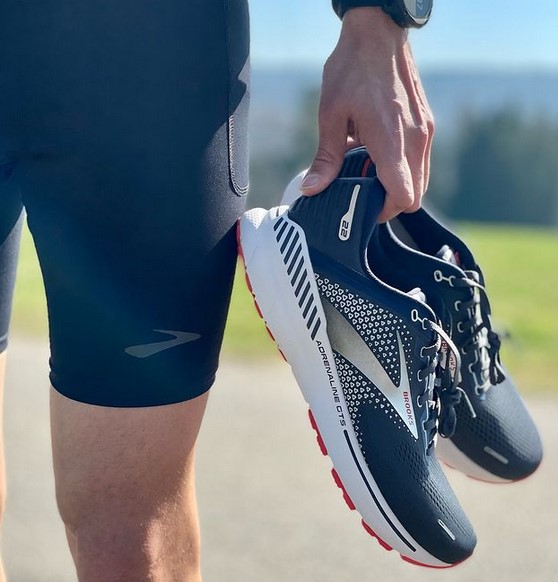
- Support
- 12mm heel drop
- Maximum cushion
- 9.0 oz (womens)
- $140
Best Neutral Cushion Distance Shoe – On Running Cloudeclipse
Those of you looking for that great recovery run and easy day shoe are going to really enjoy this one. I was a bit skeptical at first because the Cloudmonster was a such a go to, but now I can see why folks are loving the cushion of this shoe.
It became an immediate long run shoe for a lot of folks. The big thing is the stack height increasing…but let’s be honest that is a trend across every cushioned running shoe at the moment.
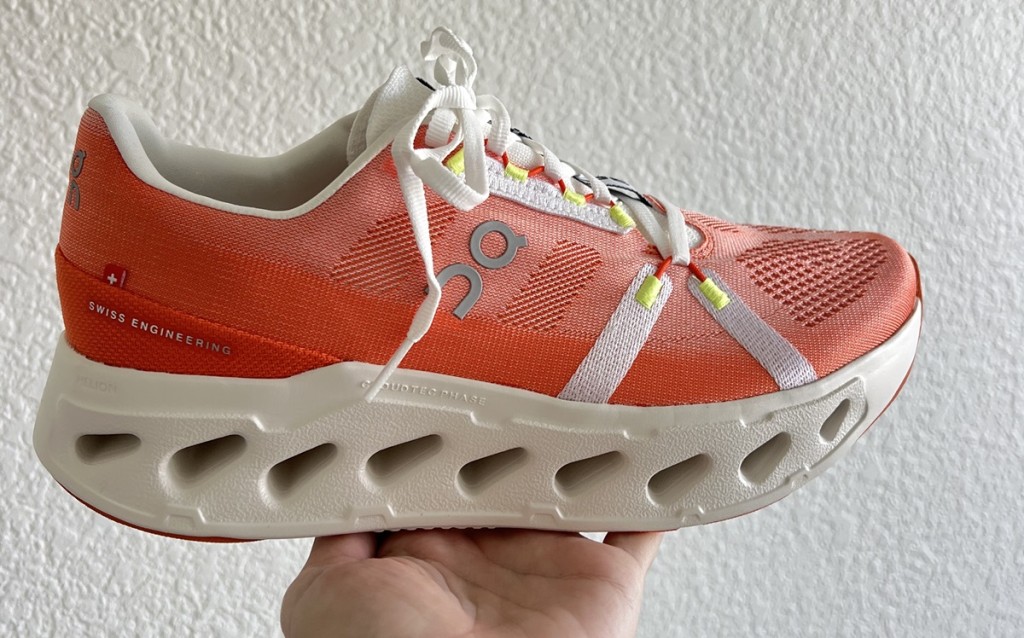
While there is a double layer of CloudTec Phase® cushioning, I don’t feel like the shoe is plush. Meaning you don’t sink in to it and lose your ability to actually push off the ground. I think is because of the speedboard which is providing both that needed firmness and a light touch of stability.
You’ll also notice this has a different bottom than older On shoes. You won’t find any issues with rocks getting stuck and you will absolutely be able to feel the cushion in this shoe, which didn’t used to be the case.
- 6mm drop
- 8.4 oz women’s, 10 oz men’s
- See my full review of the On Cloudeclipse >>
- Available at On Running and retail stores for $179
On Cloud Runner Up: On Cloudmonster
Checkout my full review linked above, this shoe is a bit less cushioned, but I feel like it is a little bit faster. AND might feel more stable for many of you.
Best Shoe for IT Band Pain – Saucony Kinvara 14
Interestingly, one of the things I have found in myself and many other runners is that getting out of shoes in the 10-12mm heel drop range seems to help reduce IT band issues.
That doesn’t meant you need zero drop. I really like a 4-6 mm shoe.
This has been one of my go to shoe models for nearly a decade. That being said, the Kinvara has changed over that time. It’s now a slightly more cushioned shoe with a bit more stack height (because everything seems to be increasing in stack height).
It’s my easy pick for what shoe I want to put miles on during vacation because I can use it for speed or easy runs.
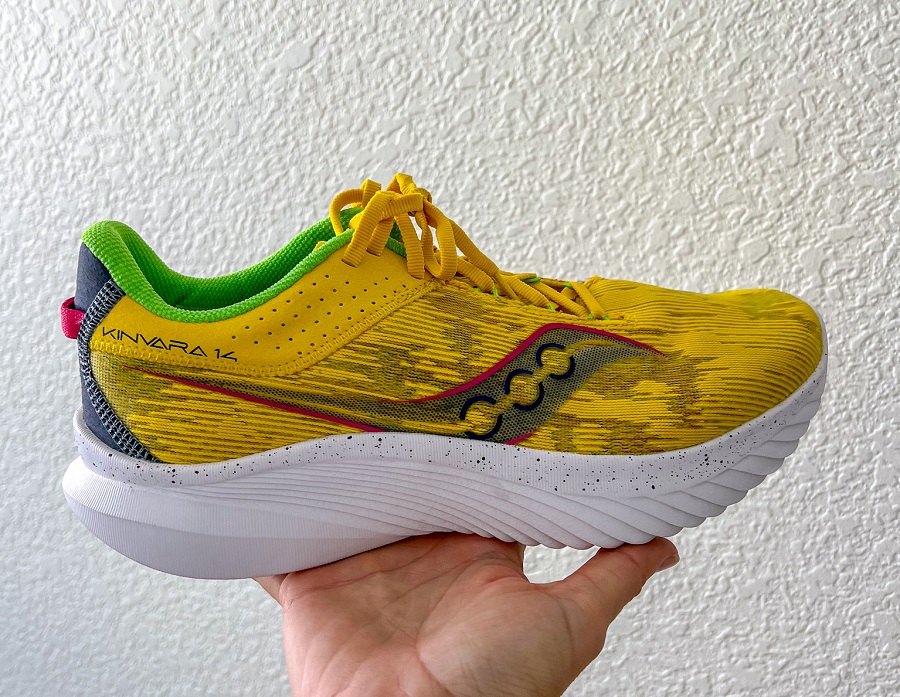
The Saucony Kinvara14 is an excellent choice for runners who are looking for a lightweight and responsive shoe that provides enough cushioning and support for longer runs. The shoe is also suitable for runners who prefer a more natural running experience, though you won’t have quite the same ground contact feeling as with older models.
The shoe’s upper is made from a breathable mesh material that allows for maximum airflow and helps to keep feet cool and dry. This one has a bootie style fit, meaning that the tongue is attached. I LOVE this because it means it’s not going to be moving all over while I run.
- Neutral shoe
- Moderate cushion
- Weight: 6.8 oz men’s, 6.2 oz women’s
- Heel drop: 4 mm
- 2 colors
- Not available in wide
- Available now on Saucony.com
Best Carbon Fiber For Support – HOKA Mach X
Previously I recommended the BondiX because it was literally designed as an ideal choice for those who will need 5+ hours to run a marathon. But they’ve stopped making that model in favor of their new high dollar carbon fiber shoe the Rocket X2, which unfortunately I just don’t love due to heel blister issues.
HOWEVER, I am a massive fan of the Mach and with the Mach X, you’re getting a little boost from the Pebax plate, without quite the cost of a carbon fiber plate. I like that it’s not too soft, which can lead us to have lower back pain during long runs as we fatigue and since in to the shoe.
The wider toe box feels really wonderful as your feet swell on the run and the very slight meta rocker helps roll your foot forward. This is especially noticeable on any downhill and I loved it!
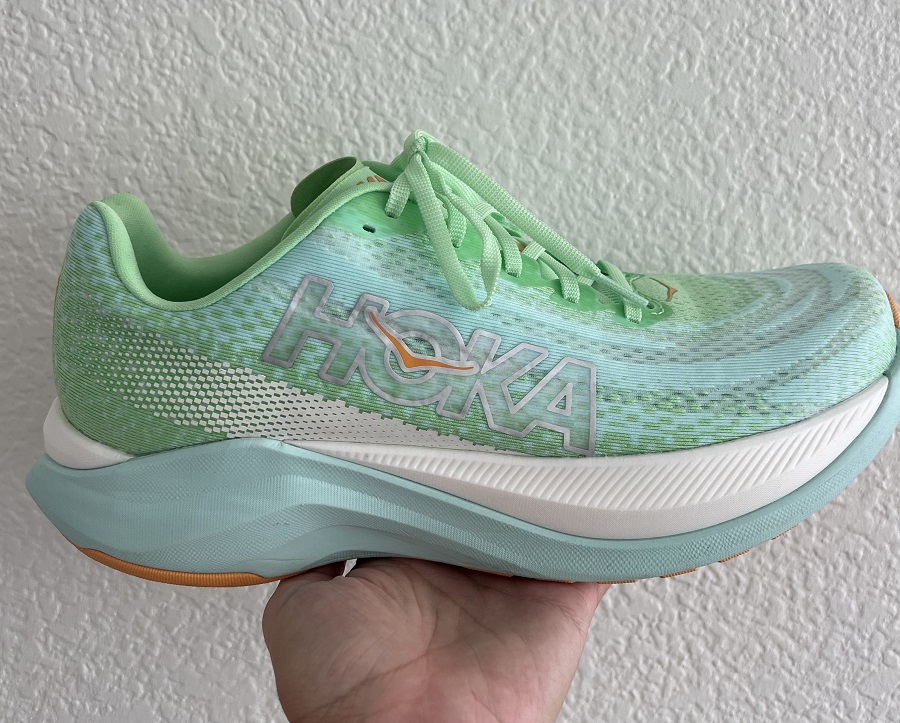
“We asked ourselves why every carbon-plated shoe on the market had to be created with an eye on only the elite runner. Everyone deserves to fly and everyone can level up.”
- Cushioned shoe with nylon fiber plate
- Wider platform provides stability without over correcting stride
- 5mm heel drop
- 8 oz women’s, 9.4 oz men’s
- $180
- See all the best HOKA running shoes from my testing
Best for Wide Feet – New Balance Fresh Foam 1080 V13
While these may be the heaviest shoes on this list, the Fresh Foam through the midsole provides the comfort you want without you feeling the bulk. I can’t say I’ve noticed the weight in these at all.
I’ve actually gone through 3 pairs of this shoe in the last few years. And while the increase in cushion means it’s lost some of the speediness I previously loved, it’s just changed places in my line up because I still really enjoy it.
The New Balance Fresh Foam X is just a winner for me. I’ve always found it to do well for high mileage without breaking down and it just feels good underfoot.
I specifically noted New Balance for wide feet because you can order most shoes in a variety of widths! I just happen to really enjoy running in this model.
- 6 mm drop
- 9.2oz Men’s 9, 7.3oz Women’s
- Available in wide
- Available on New Balance and Zappos for $165
- See my full review of the New Balance 1080 v13
A million percent buy old models to pay less! They still feel great.
Best for Trails – Hoka Challenger
The Hoka Challenger is an all-terrain shoe allowing you to go from street to trails without a hitch. While not as cushy as its sibling the Bondi, its padding provides the shock absorption you need while remaining light enough for the demands of trail running.
Again this isn’t not a stability shoe, but by default HOKA shoes provide more stability than most.
The sole boasts 4mm lugs ensuring good grip on the trails, but they’re small enough that they won’t feel wonky on the road.
- Neutral
- 5mm heel drop
- Medium cushion
- 8.1 oz (womens)
- $140
The sheer amount of trainers on the market these days can make shoe shopping overwhelming, especially when trying to deal with a specific issue such as knee pain. Obviously, this isn’t an all-encompassing list, but hopefully it provides you with, at the very least, a place to start your search.
Looking for more running shoe guides?
For more help selecting the right shoe for you, don’t worry, I’ve got you:
- How to Choose Running Shoes
- Best Running Shoes for Flat Feet
- Best Running Shoes for Wide Feet
- HOKA vs Nike
- ASICS vs Brooks
- Best Long Distance Running Shoes
Other ways to connect with Amanda
Instagram Daily Fun: RunToTheFinish
Facebook Community Chatter: RunToTheFinish
Sign Up to Receive a Weekly Newsletter with Top Running Tips and Laughs
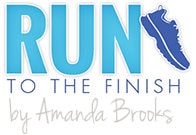

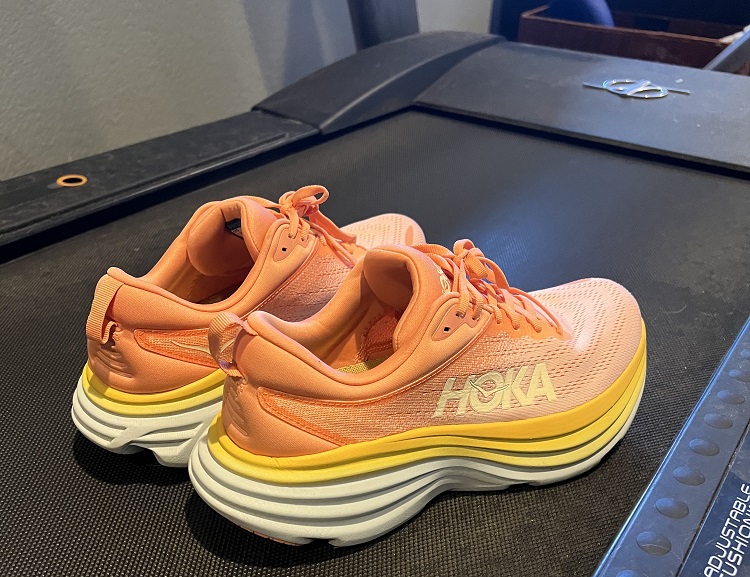
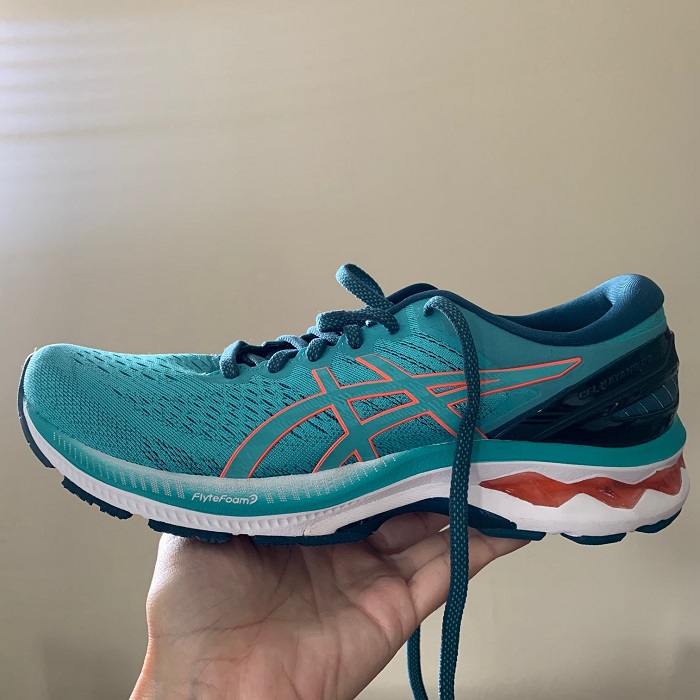
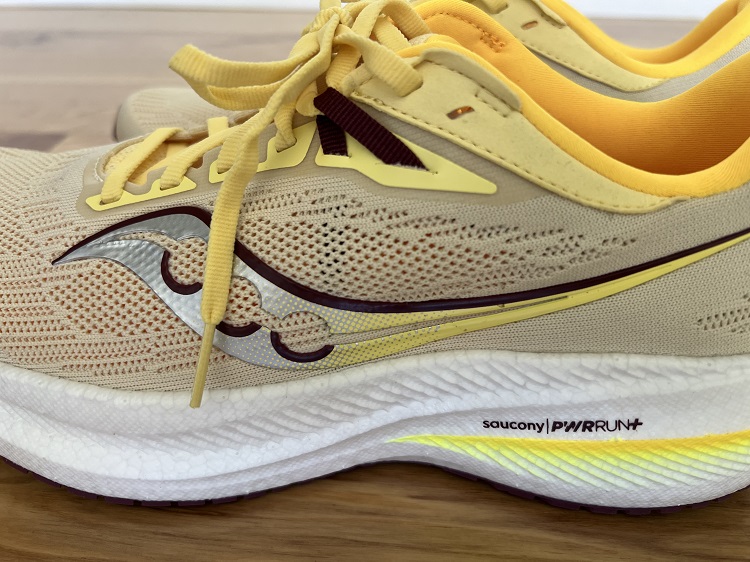
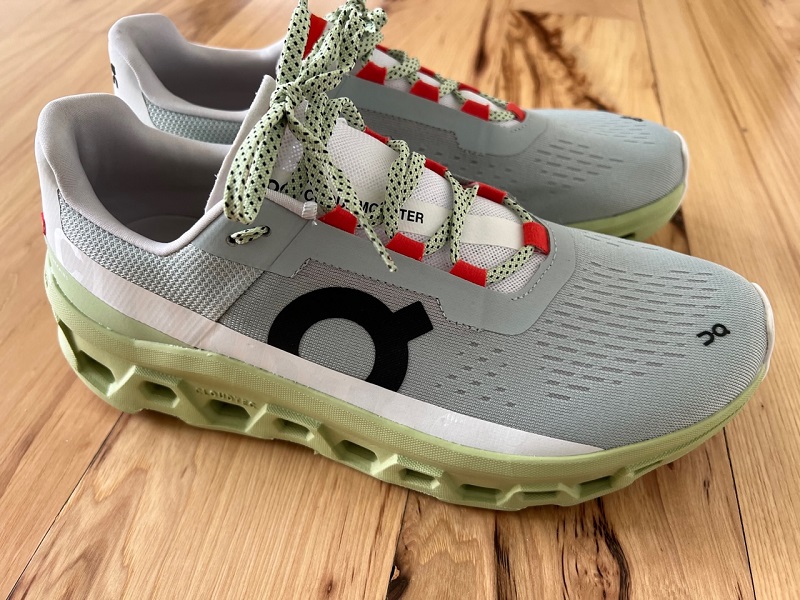
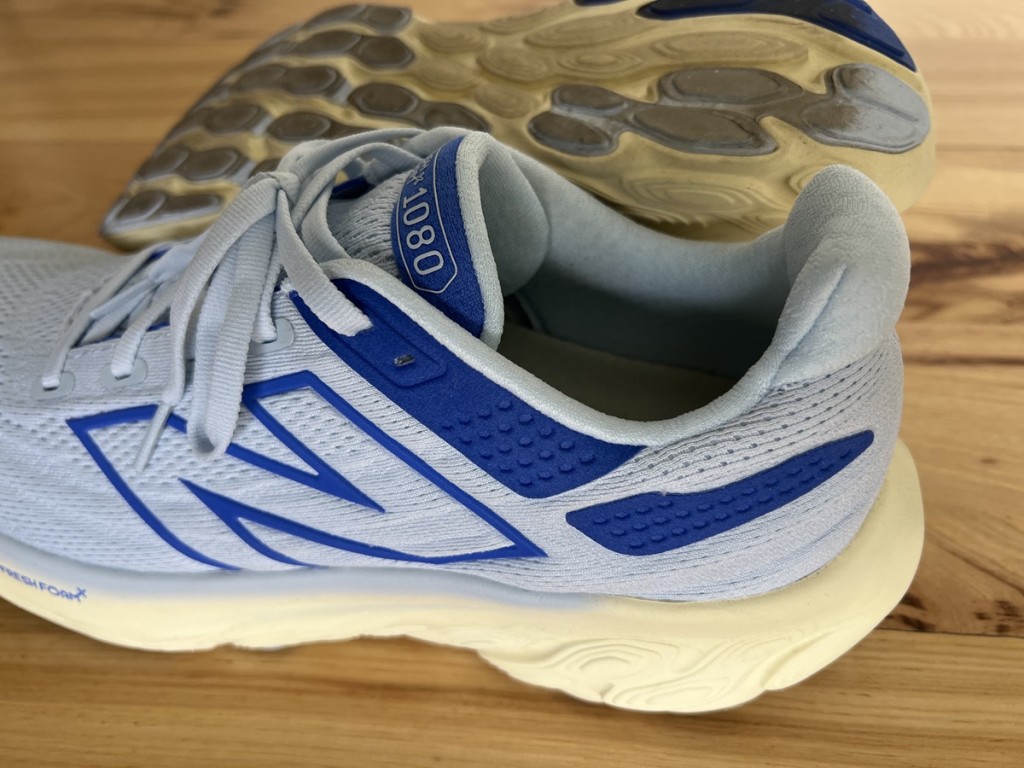
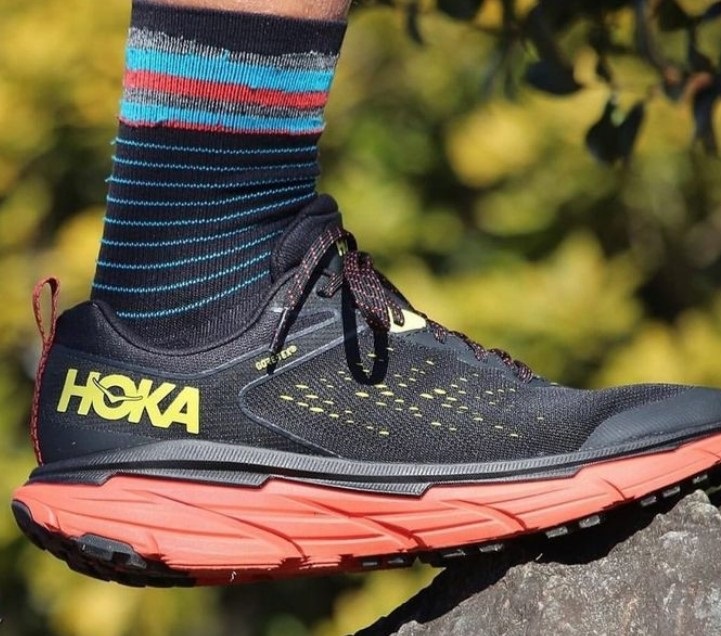
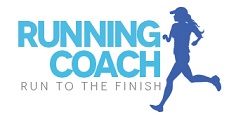
 Complete Guide to Best Cheap Running Gear (Top 10 Websites)
Complete Guide to Best Cheap Running Gear (Top 10 Websites)
